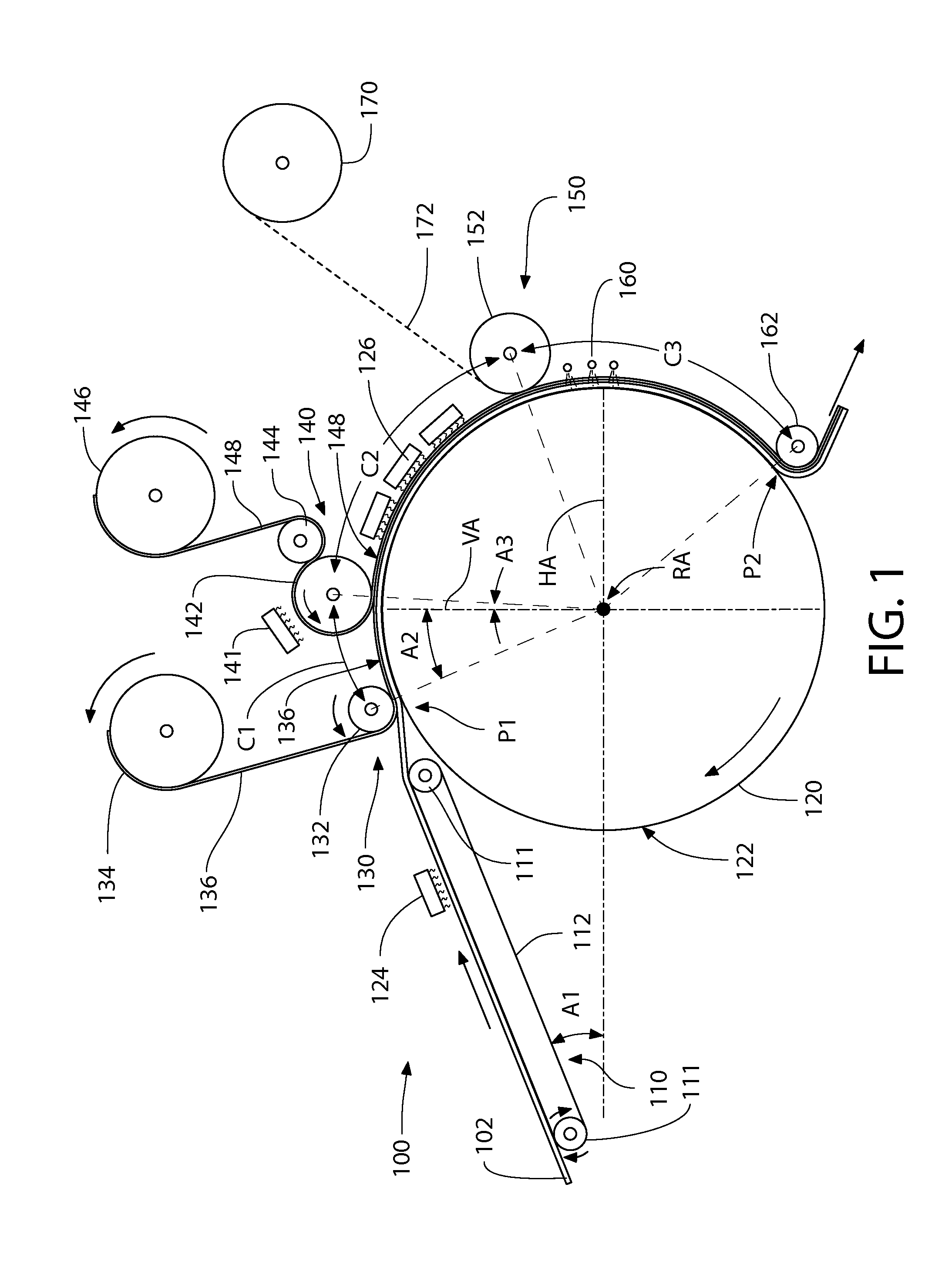Continuous floor product forming system and process
a technology of continuous floor covering and forming system, which is applied in the direction of transportation and packaging, other domestic articles, synthetic resin layered products, etc., can solve the problems of limited ability of continuous lamination process to achieve satisfactorily, and the production of lvt generally requires a costly and time-consuming annealing step, so as to improve the embossing
- Summary
- Abstract
- Description
- Claims
- Application Information
AI Technical Summary
Benefits of technology
Problems solved by technology
Method used
Image
Examples
example i
[0054]Several runs were performed using a 145 mil vinyl base layer sheet 102 (blanket) with 28% binder which was laminated with a 20 ml rigid vinyl film (RVF) wear layer 148. Average base layer sheet 102 temperature was about 330 degrees F. before laminating at wear layer laminating station 140 (reference FIG. 1). The heated laminating roller 142 temperature was about 180 degrees F. Temperature of base layer and RVF film laminate at the laminating roller 142 measured about 230 degrees F. No blistering or wrinkling of the wear layer film 102 was observed. Final gauge of the composite laminate floor covering product was about 150 mils. The test was performed using a 16-inch diameter drum.
[0055]Using the same setup in the Example I above, a cooler laminating roller 142 temperature measured at about 150 degrees F. was used for a run. The 20 mil RVF wear layer 148 wrinkled off the 145 mil base layer sheet 102 due to inadequate adhesion formed between the RVF and base layer sheet. A hotte...
example ii
[0056]A 110 mil vinyl base layer sheet 102 (blanket) with 28% binder was laminated with a 20 ml rigid, vinyl film (RVF) wear layer 148. The base layer sheet 102 temperature was about 340 degrees F. before laminating at wear layer laminating station 140 (reference FIG. 1). The heated laminating roller 142 temperature was about 180 degrees F. Temperature of base layer and RVF film laminate at the laminating roller 142 measured about 230 degrees F. No blistering or wrinkling of the wear layer film 102 was observed. Final gauge of the composite laminate floor covering product was about 120 mils.
PUM
| Property | Measurement | Unit |
|---|---|---|
| thickness | aaaaa | aaaaa |
| diameter | aaaaa | aaaaa |
| thicknesses | aaaaa | aaaaa |
Abstract
Description
Claims
Application Information
 Login to View More
Login to View More - R&D
- Intellectual Property
- Life Sciences
- Materials
- Tech Scout
- Unparalleled Data Quality
- Higher Quality Content
- 60% Fewer Hallucinations
Browse by: Latest US Patents, China's latest patents, Technical Efficacy Thesaurus, Application Domain, Technology Topic, Popular Technical Reports.
© 2025 PatSnap. All rights reserved.Legal|Privacy policy|Modern Slavery Act Transparency Statement|Sitemap|About US| Contact US: help@patsnap.com


